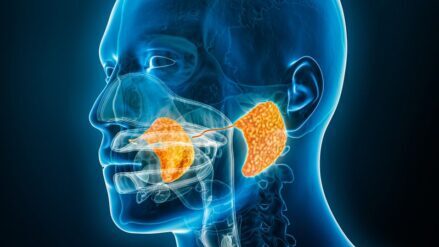
The parotid glands, located in front of each ear, are the largest of our salivary glands. Tumors that arise in these glands are known as parotid tumors. These growths can be benign (non-cancerous) or malignant (cancerous). While most parotid tumors are benign, any lump or growth in the parotid region should be evaluated to determine its nature and potential risks.
Types and Characteristics of Parotid Tumors
Parotid tumors can manifest as slow-growing, painless lumps. They can be:
- Benign Tumors: The majority of parotid tumors are benign. The most common benign tumor is the pleomorphic adenoma, which arises from the glandular or ductal tissue. Warthin’s tumor is another common benign growth often seen in the parotid gland.
- Malignant Tumors: Though less common, malignant tumors in the parotid glands can occur. Types include mucoepidermoid carcinoma, adenoid cystic carcinoma, and acinic cell carcinoma, among others. These malignant tumors might grow rapidly, causing pain or facial weakness.

Symptoms and Diagnosis
The onset of a parotid tumor often presents as a painless lump near the ear, jaw, or mouth. However, symptoms can vary depending on the tumor’s location and size. Symptoms might include:
- Facial pain or numbness. This can be a sign of nerve involvement.
- Muscle weakness on one side of the face. This is a sign that the facial nerve, which passes through the parotid gland, may be affected.
- Swelling or fluid accumulation in the neck or face.
Diagnosis of a parotid tumor typically involves a comprehensive clinical examination, followed by imaging studies like MRI or CT scans to delineate the tumor’s size and location. A biopsy might be performed to determine the nature (benign vs. malignant) of the tumor.
Treatment Approaches
The approach to treating a parotid tumor largely depends on its type, size, and location, as well as whether it’s benign or malignant.
- Surgery: This is the most common treatment for parotid tumors. The complexity of the surgery depends on the tumor’s size, location, and relationship to the facial nerve. Surgeons aim to remove the tumor while preserving the function of the facial nerve.
- Radiation Therapy: In cases of malignant tumors, especially if the entire tumor cannot be surgically removed or if there’s a risk of recurrence, radiation therapy might be necessary.
- Chemotherapy: While not a standard treatment for parotid gland tumors, chemotherapy might be used for specific cases or when the cancer has spread to other parts of the body.
With advancements in diagnostic techniques and treatment modalities, individuals diagnosed with parotid tumors can look forward to effective management and a positive prognosis. The interdisciplinary approach, involving otolaryngologists, radiologists, oncologists, and other specialists, ensures comprehensive care for those affected by these tumors.
Potential Risks and Recovery
With surgery, potential risks include facial nerve injury, which can result in facial weakness, and Frey’s syndrome, where sweating occurs while eating. Post-operative care is vital, with regular follow-ups to monitor for potential recurrence or complications.
Recovery can vary based on the treatment administered. Post-surgical patients might experience pain and swelling, which usually resolves over time. Physical therapy might be recommended if there’s any facial nerve involvement.
